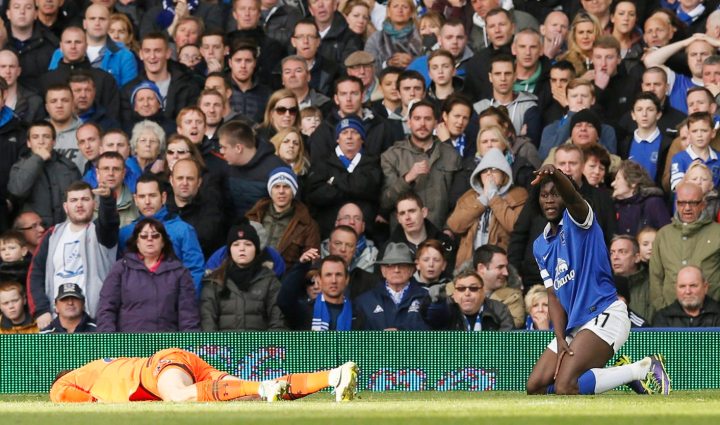Sport
Soccer: Playing hardball with head injuries

Hugo Lloris suffered what looked like a clear concussion over the weekend. Instead of taking him off the pitch, his manager, Andre Villas-Boas, allowed him to carry on and praised his “assertiveness” to do so. This once again highlights the staggering ignorance surrounding the serious dangers around an injury which is so often ignored, especially in soccer. By ANTOINETTE MULLER.
When Hugo Lloris and Romelu Lukaku collided in a Premier League game on Sunday, it looked nasty. Lloris was briefly knocked out and couldn’t remember that he had been knocked out. Yet, he got up and eventually carried on.
Former and current players as well as endless fans lauded him for “being a champion” and even Tottenham’s manager, Andre Villas-Boas, defended the fact that he was not substituted, telling Sky Sports after the game: “The medical department was giving me signs that the player couldn’t carry on, because he couldn’t remember where he was. But he was quite focused and determined to continue, so when you see this kind of assertiveness it means he is able to carry on, and that is why it was my call to delay the substitution… The call always belongs to me. Brad [Friedel] was ready to come in but the person Hugo is, there were enough signs for him to continue.”
The fact that Villas-Boas allowed his player to carry on, despite the medical staff suggesting otherwise, and the fact that Lloris is hailed as a “champion”, shows the vast ignorance surrounding head injuries which still prevails in so many sports, but especially in soccer.
The esteemed Bob Skinstad has previously written on these pages about the dangers of concussion in rugby and how it is similarly disregarded as a serious issue. The International Rugby Board (IRB) employs a rather foolish “five minute” rule which simply means that if a player takes a knock to the head he can return to the field of play after just five minutes, as long as the medical team has cleared him of concussion. Previously, players who took a knock to the noggin and were suspected to suffer from concussion were forced to leave the pitch and take a week off. The difference between rugby and soccer is that at least there is some sort of consciousness surrounding the dangers of it.
Fighting in the corner of rugby players is Dr Barry O’Driscoll, who is desperate to try and raise more awareness around the issue, starting at grass roots. Similarly, Peter FitzSimons (a former Wallaby) has also raised the issue, as has Skinstad.
In American football, as many as 4,500 former American footballers are making their grievances heard.
Nishant Joshi, a final year med student and sports writer, suggests that this kind of incident should serve as a wake up call for the FA, who do not follow any sort of protocol. FIFA have clear rulings on the issue. Their regulations state that if concussion is suspected, a player should be immediately removed from play and urgently assessed medically. However, each nation have their own protocols and do not have to follow the example set by football’s world governing body.
“The NFL’s recent $765m settlement should serve as a a jolt to the FA to review their concussion policies, which are evidently woefully inadequate, as recently seen in Lloris’ case. The FA have a duty of care to all footballers under their umbrella, and could find themselves on shaky legal ground should a concussed player find himself re-injured within a short time frame,” Joshi told The Daily Maverick.
“As well as the FA’s ethical and legal obligations to their players, from a medical point of view, with the research available on the long-term effects of concussion, it’s tantamount to negligence to fail to have standardised medical guidelines for players suspected of suffering from concussion,” he added.
In rugby, at least there is some sort of awareness around the issue and at least some players wear some form of protective head gear. This was evident when Mathieu Flamini was taken off after being knocked on the head. Arsenal’s doctor, Gary O’Driscoll, is a former doctor at Lions rugby, the education and awareness is far higher. At school level, some schools ask children to be taken off the rugby field immediately and given two weeks off in order to ensure everything is okay.
In soccer, though, the issue is hardly talked about, despite the fact that four to 22 percent of injuries in soccer are to the head. Of those percentages, concussions make up two to three percent of all injuries – the same rate as American football. The most common cause is actually heading the ball, followed by the colliding of heads.
The dangers are there and sometimes, in a sport like soccer, the symptoms can go undetected and the seriousness of the injury is ignored. Briana Scurry, a two-time Olympic goalkeeper, is a strong case for the need to be more aware about the severe injuries that come with soccer. For three and a half years she suffered severe headaches and spiralled into depression after a head injury ended her career.
In April 2010 she collided with another soccer player and the headaches started. After years of toing and froing she underwent surgery and doctors discovered little pieces of damaged tissue which were then plucked from her brain. The headaches disappeared.
The need for more education around concussion and how to deal with it is important across all soccer codes, but especially for women. According to studies, women suffer concussions at twice the rate men do, and one in two female soccer players will have concussions in their career.
For Scurry, much like Lloris, it was a knee to the temple that left both her and her challenger on the ground. She got up and played before everything eventually started to blur out of focus and she had to leave the pitch. Doctors thought she would just need a few days to recover, like people who suffer from concussions usually do, but her symptoms persisted and her career ended.
Concussions are complex and they can be extremely dangerous, yet doctors still know very little about them, actually. The basics are pretty straight forward – when the initial trauma happens, the brain knocks the skull and bruises or bleeds – but when it comes to things like impaired cognition, memory loss, imbalance, mood disorder and changes to brain physiology, doctors know little.
“Repeated concussion can lead to a degenerative neurological disorder called Chronic Traumatic Encephalopathy, whose symptoms are similar to Alzheimer’s. Any player who is suspected of being in a concussive or sub-concussive state is at risk of further brain injury, and should be nowhere near a football pitch. It shouldn’t even be a question,” Joshi explains.
Junior Seau, a former NFL player, unknowingly suffered from CTE after retirement and eventually committed suicide. Although he had no reported history of concussions, his ex-wife said he suffered a few during his career but always “bounced back”.
The problem is widespread and it’s a serious one, but yet there is no kind of protocol for players in soccer when it comes to such a serious injury – and that managers are completely ignorant about the seriousness of the issue once again shows the need for reform and education.
The need for fans to applaud soccer players like Lloris when they get up in carry on, especially in a sport where players have the reputation to be “soft”, is understandable. However, this is largely based on ignorance and everyone, including the managers, have the responsibility to change that. DM
Photo: Tottenham Hotspur’s goalkeeper Hugo Lloris (L) lies injured after a collision with Everton’s Romalu Lukaku (R) during their English Premier League soccer match at Goodison Park in Liverpool, northern England November 3, 2013. REUTERS/Phil Noble


















